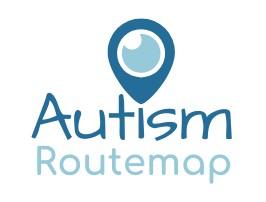Understanding Autistic Overwhelm

The “O” word. Overwhelm. I hear so many of my clients use it to describe how they feel.
Overwhelm is often the reason that intellectually able people seek a diagnosis in the first place. It’s not necessarily big issues with communication or people skills per se but rather, a sense that it’s all too much.
“All too much” comes in many shapes and sizes. It may be the university student who drops out of their course because they are too far behind. Or the partner who is collapsing under the combined demands of raising children and running a home. It could be the person who feels unable to cope with the endless emails and project challenges at work.
The reality is that demands grow as we move from childhood to adulthood. “Adulting”, as some call it, comes with a lot of pressure. University students, for example, have to figure out a myriad of new things. From feeding themselves to finding their way around campus, making new friends and everything in between, student life is certainl...
The secret to making a difficult conversation easy

A few years ago I tried a low carb diet – you know the kind that sucks all the fun out of a burger? Is it even called a burger if there is no bun? Let’s face it, a true burger is the whole deal – bun on the bottom, filling in the middle and bun on the top. A sandwich of sorts.
Speaking of sandwiches reminds me of the "feedback sandwich". It’s an illustration I use with clients when talking about difficult conversations. Those conversations that need to happen but all too often, go horribly wrong.
Being around people in everyday life inevitably means that there will be problems from time to time. Perhaps there is an issue with sharing household chores or the less than stellar piece of work from a colleague. Maybe your child is refusing to do their homework or a friend has betrayed your trust. Small or big, these things typically get resolved (or not) through discussion.
Because it's challenging, we may get a bad case of wishful thinking and put it off hoping for some miraculous chang...
5 keys to reduce confusion between autistic & neurotypical people

Autism and Asperger’s were first described in the 1940s and early portrayals were of people with very pronounced social communication difficulties and repetitive behaviours. Over time, the concept of a spectrum emerged as we learned that autism also presents in far less obvious ways. The current statistics indicate that 1 in 100 people in the UK are autistic. It is highly likely therefore, that our social circles include a mix of neurotypical and autistic people.
I love the work of developmental psychologist, Dr Robert Kegan, who authored the book, “An Everyone Culture”. Dr Kegan describes the possible transitions in our mindsets as we mature throughout life. From our impulsive minds at birth where we act on impulse and instinct to the pinnacle of the self-transforming mind, where we can appreciate that everyone has a unique life story. Rather than a black and white mindset, the self-transforming mind embraces change and growth as it collaborates with others. What is interesting, is...
Banish the confusion. Clear guidance on understanding neurodivergent communication.

On an early morning drive the other day, I suddenly found myself in dense fog which faded the road in front of me. I immediately slowed down hoping my tyres wouldn’t be destroyed by one of the many potholes that dot the country lanes where I live. Gripping my steering wheel, I edged forwards cautiously and then, just as suddenly as it had arrived, the fog disappeared into my review mirror leaving me in glorious sunlight.
That fog reminded me of the way neurodivergent people often experience communication. I’ve been told many times by clients that they feel as though there is some exclusive communication manual which everyone else has read – except them. And that leaves them feeling like they are operating in the fog hoping not to hit any miscommunication potholes.
Well, in the interests of lifting that fog, the following is an explanation for some of the miscommunications that happen between neurodiverse and neurotypical people.
Because we’re not dealing with overt physical diff...
The overlooked communication tool that fuels connection

I recall a time when I was seated next to a young couple in a restaurant. Both were glued to their phones. I assumed they must be mid-argument – you know the point where you’ve reached a deadlock, and no-one is speaking? But I was entirely wrong. Every now and again, in between mouthfuls of burger and chips, one would lean over and together they would smile or laugh at something on one of their phones.
It’s no secret that we are a distracted generation. Our attention is constantly drawn to our phones, computers and TV’s. It’s where we find a treasure trove of likes, comments, memes, funny clips and interesting facts which give us little “feel-good” dopamine hits throughout the day.
You would think that all this entertainment would make us the happiest people group in history. But the statistics tell a different story …
The number of people seeking professional help for mental health issues is rising at an alarming rate. According to a 2017 report by the American Psychological Ass...
Demystifying the needs of autistic / neurodiverse people

In the last two Blog posts, I’ve been looking at some of the issues that cause tensions in relationships between autistic / neurodiverse and neurotypical people. These points of friction often disappear or become smaller as we develop an understanding of one another.
And in the interests of further developing that understanding, today’s post continues to address more stressors that become like a pebble in the relationship shoe. Things that cause friction and sometimes, even relational breakdown.
All relationships are a two-way street. And that means both parties need to adapt in order to accommodate each other. What follows are some ways in which the neurotypical person can adapt to play their part in building a flourishing relationship.
Change
Autistic / neurodiverse people typically have more structured thinking styles which means they may well have a high need for control, predictability and order. Dealing with changes or having things suddenly sprung on them at the last minute...
How neurodiverse people can help others to understand their needs

For years, autistic / neurodiverse people have been asking why they should have to change to fit into society. And as voices are slowly being heard, there is a growing trend towards acceptance and embracing difference. Granted, we still have a long way to go but the tides are changing. Society, on the whole, is marching forwards.
When it comes to the workplace, UK law (Equality Act 2010) states that reasonable adjustments should be made to prevent discrimination of people with disabilities. At the core, this is humanity’s recognition of difference. And that awakening, leads us to respect and accommodate diverse needs. In other words, to develop a culture which says, “you’re OK and I’m OK”.
So, we’re improving in the workplace but what happens outside of work? An autistic / neurodiverse person doesn’t finish their working day at 5pm only to find themselves magically morphed, like Cinderella, into someone else. In the real world there is no “bippity boppity boo” – the same nee...

